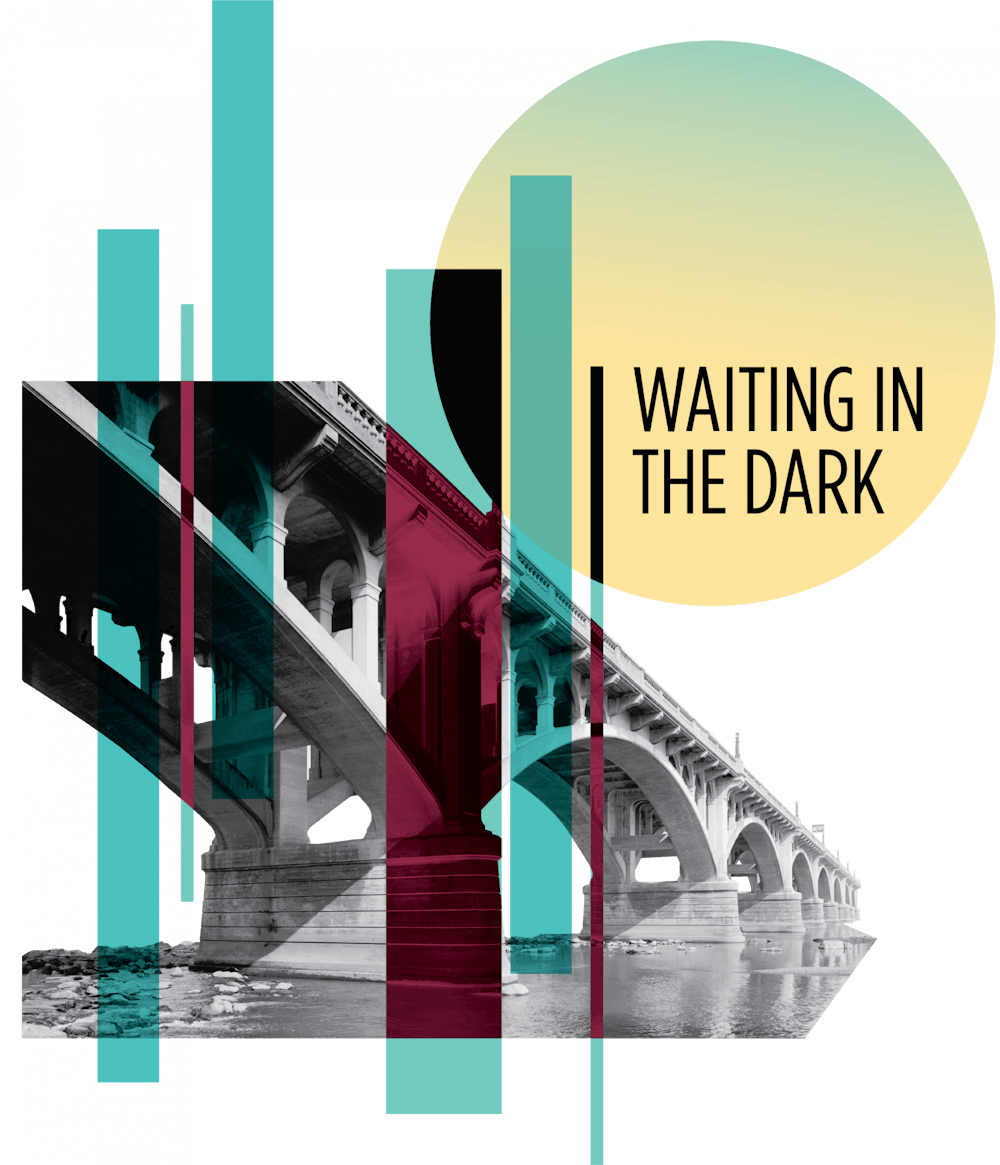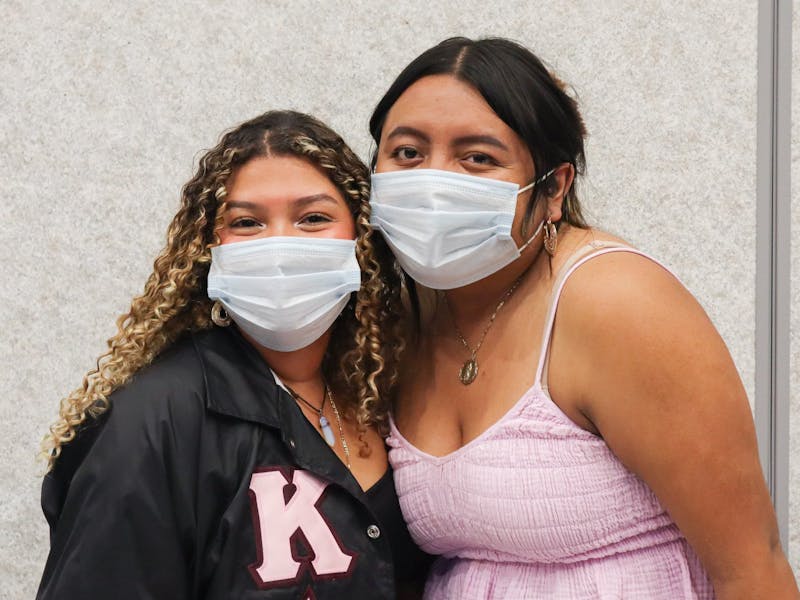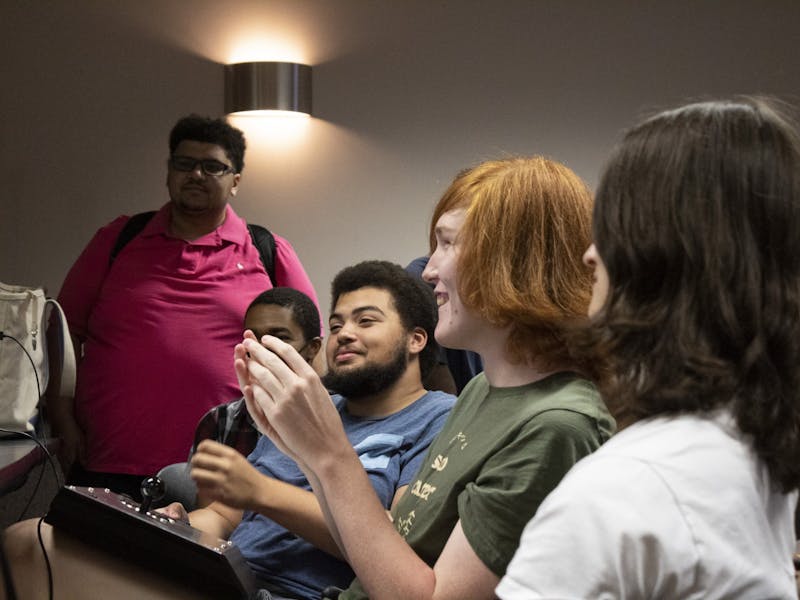Illustration by Meredith Price
Ah, 2017. The year of the eclipse. It was August—the beginning of my sophomore year. Columbia was bristling with sweating tourists, every local business advertising with branded eclipse glasses, and life in Columbia was good—incredibly hot, unreasonably crowded, but good, nevertheless.
I had just started as the articles editor of this magazine; before school started, I interrupted my tranquil, Lowcountry summer to travel to the Garnet & Black office in Russell House to officially brainstorm the new articles list for my very first issue on staff. One of the articles I assigned myself had homework attached—a preview of a public laser art installation called “Southern Lights,” where for the first time, the 10-year exhibition would be turned on for the city to behold. Designed to be both technologically challenging and beautiful, “Southern Lights” would encompass multiple blue and green laser beams seen from the Blossom and Gervais Street bridges over the Congaree.
Although I interviewed Chris Robinson, the USC professor responsible for designing and implementing the installation, I never went to the preview. Instead, I spent the day forgetting any upcoming responsibilities, exploring the Riverwalk with my best friends, celebrating our new apartment and our new life surrounded by nature, wildlife, and winding paths, perfect for losing track of time. Little did I know—the preview would be the only time anyone got to see “Southern Lights.”
My article ended up being pushed back one issue, then two, then indefinitely put on hold as we waited for news of when the installation would actually debut. We had heard that it would be after the eclipse, but as fall turned into winter, and winter into the new year, I began to worry. Back in Spring 2018, I emailed Professor Robinson once more, using such forward language that I, reading back over my wording, cringed slightly: “I cannot find any concrete information that the project will be completed over the summer. Could you point me in the right direction, or possibly give a timeline?” I never heard back.
--
Professor Robinson, at the time, and presumably still, knew more about laser art than most other people wandering the planet. Much more powerful than the lasers scanning groceries, these beams planned to traverse the Congaree are powerful, forward-moving, concentrated light that continues to travel if not met with impediment.
Laser becomes art when paired with an empty black sky, a rushing, dark river below, a crowd of trees muffling either bank as cars speed over the bridge. The blue and green beams were supposed to intersect and diverge, calling the viewer to examine their points of origin and their ultimate destination.
While some locals worried about the detriment to the more natural views of the Congaree, both Robinson and community sponsors such as the State Museum, OneColumbia, Richland County, and all three cities with claim to the Congaree (Columbia, West Columbia, and Cayce) maintained that the lasers (activated for three hours per night, weather permitting, for up to ten years, technology permitting) would enhance the nightly experience of the river, bringing together tourism and locals, nature and manmade art.
Ultimately, however, no one ever got the chance to find out for themselves whether these claims were true. Two years on, “Southern Lights” is nowhere to be seen.
Even at the time of the interview, before the first (and only) public exhibition of “Southern Lights,” Professor Robinson had reservations about the longevity of the project. “Unfortunately, laser light is extremely technically complex in this context and hard to manage beam stability. The laser tube has an average life of 10,000 hours. At three hours a night, that would be about ten years, but the environment here—heat, humidity, and afternoon and evening storms—make it very hard to keep the piece stable.”
Robinson’s comments on the nature of audience commentary also seem prescient in questioning why the piece never emerged: “Art often seems easy, but, like many things in reality, often isn't. Everybody thinks they can paint like Pollock, but have never tried, and may not appreciate the implications.”
These implications seem to have put the piece indefinitely on hold. This retrospective article comes more than a year after the first round of creeping questions began to be publishing in South Carolina papers and news outlets. The State, the Free Times, and the Post & Courier all published pieces following up in 2018 about the progress of “Southern Lights.”
On June 6, 2018, the director of OneColumbia, Lee Snelgrove, spoke to the Post & Courier: "[Southern Lights] never really stopped being a focus for us. We’ve been working with it the whole time. We are now at a point where Chris [Robinson], the artist, is turning them on some nights to make adjustments… I don’t really have a timeline right now for completion. ‘Soon’ is all I can say.”
But how soon is soon? Will the blue and green beams ever grace our riverbanks? As of this moment, Professor Robinson has moved to Beaufort and serves as the chair of the Visual Arts department at USCB; it’s unclear how committed he remains to a now two-year-stalled project. The website for “Southern Lights” still states “COMING 2018” and no updates have been issued from any of its sponsors.
--
It remains a mystery whether “Southern Lights” failed purely due to technology problems, logistics, or perhaps funding quarrels between the multitude of sponsors, all with varying levels of involvement in various city governments and non-profits. Public art is hard to mount support for, and even harder to justify to a budgetary committee—it’s unclear where the direct benefit to the citizen can be quantified.
But part of the sadness in never seeing “Southern Lights” is that art shouldn’t create a quantifiable experience. Professor Robinson had this to say, back in 2017, about the mystery of the intricate web of lasers he had drafted and dreamed for: “You cannot see it from any one place. Rather you must be curious, explore, and discover its secrets.”
Even in the absence of “Southern Lights,” I hope that you take the artist’s advice. Adventure into Columbia; spend long afternoons and silent nights walking to Horizon Garage, or down the Riverwalk, or your own clandestine spots on campus, those areas of USC that you will remember as belonging only to you, if only for a brief time. Without the framework of public art, we are left to treat our own experiences and surroundings as meaningful and sacred.



